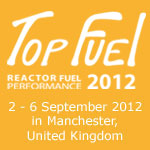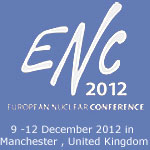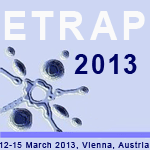
| |
|||||||||||||||||||||||||||||||||||||||||||||||||||||||||||||||||||||||||||||||||||||||||||||||||||||||||||||||||||||||||||||||||||||||||||||||||||||||||||||||||||||||||||||||||||||||||||||||||||||||||||||||||||||||||||||||||||||||||||||||||||||||||||||||||||||||||||||||||||||||||||||||||||||||||||||||||||||||||||||||||||||||||||||||||||||||||||||||||||||||||||||||||||||||||||||||||||||||||||||||||||||||||||||||||||||||||||||||||||||||||||||||
True |
76.9 |
Not true |
11.0 |
Don’t know |
12.1 |
|
100.0 |
n = 1.018
In particular, women, older people and those with less formal education tended to express this opinion. The correlation with age is particularly evident. In the two highest age-groups (51-65 years and 66 years and older) about 20% more respondents were of this opinion than in the two lowest age groups (up to 25 years and 26-35 years). It is also noteworthy that in the youngest age group 24.4% responded with "don’t know", whereas only 4.7% and 5.0% respectively of the older respondents replied in this way. So, older people seem to worry the most about nuclear power.
Table 2: The risks of nuclear power are higher than those of other energy sources: gender
|
Gender |
|
|
Male |
Female |
True |
74.0 |
79.8 |
Not true |
14.7 |
7.4 |
Don’t know |
11.3 |
12.8 |
|
100.0 |
100.0 |
n = 1.018; Cramers V = 0.117; p***
Table 3: The risks of nuclear power are higher than those of other energy sources: age
|
Age |
||||
|
Up to 25 |
26-35 |
36-50 |
51-65 |
over 65 |
True |
63.1 |
68.4 |
77.1 |
87.6 |
84.3 |
Not true |
12.5 |
13.3 |
11.4 |
7.7 |
10.7 |
Don’t know |
24.4 |
18.4 |
11.4 |
4.7 |
5.0 |
|
100.0 |
100.0 |
100.0 |
100.0 |
100.0 |
n = 1.016; Spearman = -0.210; p***
Table 4: The risks of nuclear power are higher than those of other energy sources: education
|
Highest education level |
|||
|
Primary school, secondary modern school |
Technical school |
Secondary school |
Academia |
True |
76,6 |
79,1 |
75,8 |
73,2 |
Not true |
8,3 |
8,5 |
12,5 |
17,3 |
Don’t know |
15,2 |
12,4 |
11,7 |
9,5 |
|
100,0 |
100,0 |
100,0 |
100,0 |
n = 1.014; Spearman = -0,024; p*
When asked about the perceived rate of fatalities, the study revealed that uranium got most “very many” votes of all energy sources (22.5%). However, when both the "many" and "very many" categories are taken into consideration, petroleum and coal appear in a similarly bad light. Natural gas, and especially water, are considered to be much less dangerous.
Table 5: In your view, how many casualties have the following five primary energy carriers claimed in the last 50 years?
|
Casualties in the last 50 years claimed through |
||||
|
Natural gas |
Crude oil |
Coal |
Uranium |
Water |
None |
1.8 |
2.4 |
3.8 |
2.0 |
19.2 |
Some |
25.9 |
15.2 |
17.4 |
14.1 |
41.8 |
A few |
43.0 |
36.5 |
29.6 |
33.5 |
22.6 |
Many |
21.3 |
30.9 |
32.5 |
27.8 |
9.8 |
Very many |
8.0 |
15.0 |
16.7 |
22.5 |
6.6 |
|
100.0 |
100.0 |
100.0 |
100.0 |
100.0 |
n = 990-1.006
On the question of environmental impact, the assumed “safety” of hydropower is even more pronounced. 79.5% of respondents believe its impact is "no" or "low" pollution. Apart from that, however, the opinions expressed resemble those it relating to fatality rates: natural gas and water are considered to be less risky than oil, coal and uranium. In this context, respondents consider oil even slightly more menacing than uranium. This could be due to the fact that the survey was carried out just a few months after the accident at the Deepwater Horizon oil rig where, on 20 April 2010, several workers lost their lives. The Austrian media, however, mainly reported on the environmental impact of the escaping oil.
Table 6: How great has the level of environmental impact caused by the following primary energy carriers been over the last 50 years?
|
Environmental impacts over the last 50 years caused by |
||||
|
Natural gas |
Crude oil |
Coal |
Uranium |
Water |
None |
6.9 |
1.8 |
2.5 |
4.4 |
41.0 |
Low |
32.2 |
9.2 |
15.9 |
11.4 |
38.5 |
A few |
34.7 |
25.7 |
24.8 |
25.7 |
12.2 |
High |
17.5 |
31.4 |
31.2 |
27.7 |
5.1 |
Very high |
8.7 |
31.9 |
25.6 |
30.9 |
3.2 |
|
100.0 |
100.0 |
100.0 |
100.0 |
100.0 |
n = 1.004-1.018
How changeable are attitudes towards nuclear power?
150 persons who participated in the first survey were interviewed either in writing or orally, according to preference. Each interviewee received a specially developed information text and had a conversation for about 30 minutes with a staff member of the Austrian Nuclear Society. 132 participants were given written documents, 18 opted for personal calls. One to three weeks later all 150 were interviewed again on nuclear energy. The questions regarding personal attitudes were then repeated verbatim from the first survey in order to measure possible changes in opinion. After the interview process the perception of risk expressed changed quite clearly. The proportion of people who do not believe that nuclear power is more risky than other forms of energy increased twofold, to 18%. This is still low, however, compared to the 64% who still consider it to be more risky.
Table 7: The risks of nuclear power are higher than those of other energy sources (Evolution after interviews)..
|
1st Survey |
2nd Survey |
Right |
80.3 |
64.0 |
Wrong |
8.8 |
18.0 |
Don’t know |
10.9 |
18.0 |
|
100.0 |
100.0 |
n = 147-150
With regards to fatalities and environmental impacts attributed to the different energy sources, possible changes following on from the interviews were also analysed. For this purpose a distinction was made between a small and a large change. After the interviews only uranium received a lower or much lower perceived rate of fatalities than before (44.5 %). For the other four energy sources the suspected rate of fatalities rose, most notably for coal and water (45.6% and 48.6% of respondents respectively).
Table 8: In your view how many fatalities did the following five primary energy carriers claim over the last 50 years? (Evolution after interviews)
|
Casualties over the last 50 years claimed by |
||||
|
Natural gas |
Crude oil |
Coal |
Uranium |
Water |
Much less casualties |
2.1 |
2.8 |
0.0 |
6.3 |
1.4 |
Less casualties |
25.5 |
22.8 |
22.4 |
38.2 |
19.2 |
Unchanged |
40.7 |
39.3 |
32.0 |
32.6 |
30.8 |
More casualties |
29.7 |
33.8 |
42.9 |
22.2 |
41.8 |
Much more casualties |
2.1 |
1.4 |
2.7 |
0.7 |
6.8 |
|
100.0 |
100.0 |
100.0 |
100.0 |
100.0 |
n = 144-147
Much the same kind of evolution was noted with regards to environmental impacts: Nuclear power’s reputation improved following the interview. 41.8% of respondents regard it “less” or “much less” polluting. The other energy sources, by contrast, were now viewed as causing greater environmental damage. One exception is oil, however, which also performed better (31.8 percent of respondents) than before the interviews. Within this context, its negative assessment in the first survey has to be considered.
Table 9: How great have the environmental impacts caused by the following primary energy carriers been over the last 50 years? (Evolution after interviews)
|
Environmental impacts over the last 50 years caused by |
||||
|
Natural gas |
Crude oil |
Coal |
Uranium |
Water |
Much less impact |
2.0 |
0.7 |
0.7 |
4.8 |
1.4 |
Less impact |
22.8 |
31.1 |
20.8 |
37.0 |
15.5 |
Unchanged |
45.0 |
40.5 |
44.3 |
36.3 |
48.6 |
Higher impact |
27.5 |
25.7 |
31.5 |
21.9 |
32.4 |
Much higher impact |
2.7 |
2.0 |
2.7 |
0.0 |
2.0 |
|
100.0 |
100.0 |
100.0 |
100.0 |
100.0 |
n = 146-149
Based on these five questions, the respondents’ knowledge of nuclear power was assessed. In coordination with experts from the Vienna University of Technology /Atominstitute and the Austrian Nuclear Society, who participated in the technical study, very accurate answers were provided. 38.3% of respondents correctly indicated that the share of nuclear power in Austria’s total energy consumption is 12%. However, 34.1% estimated it to be 6%, a percentage quite close to 38.3% .
As far as the four other questions aimed at determining knowledge levels were concerned, in each case a relative majority of respondents chose the appropriate answers. When estimating the number of nuclear power plants in countries that are neighbours with Austria, the margin is again very narrow: 33.5% choose the right answer "37 power plants", 31.8% opted for "25 power plants". Considering the fact that the two proposed numbers (25 and 37) differ rather clearly, the limits in the respondent’s knowledge about nuclear power are clearly visible. There was only one question that was answered correctly by an absolute majority: the one regarding the legal basis for ensuring that no nuclear power is generated in Austria itself. Here 74.4% correctly opted for "Austrian law" (Nuclear Non-Proliferation Act of 1978, included in Austria’s constitution since 1999). With all other questions aimed at determining knowledge levels the absolute majority of respondents is mistaken.
Table 10: Energy consumed in Austria comes from different energy carriers (coal, natural gas, water, etc.). How high is the share of nuclear power in Austria’s total energy consumption?
0 percent |
11.7 |
6 percent |
34.1 |
12 percent |
38.3 |
24 percent |
15.9 |
|
100.0 |
n = 1.011
Table 11: Since when has nuclear power been used commercially?
Since the thirties |
5.1 |
Since the forties |
16.1 |
Since the fifties |
46.9 |
Since the sixties |
31.8 |
|
100.0 |
n = 1.016
Table 12: How many nuclear power plants are in service in countries neighbouring Austria?
18 nuclear power plants |
13.6 |
25 nuclear power plants |
31.8 |
37 nuclear power plants |
33.5 |
44 nuclear power plants |
21.2 |
|
100.0 |
n = 1.011
Table 13: As far as raw materials are concerned, the availability of uranium on earth is limited. In your view how many years can nuclear power stations remain operational based on current reserves of available uranium?
50 years |
20.3 |
100 years |
37.9 |
150 years |
23.4 |
200 years |
18.3 |
|
100.0 |
n = 981
Table 14: Which kind of legal basis ensures that nuclear power cannot be generated in Austria - Austrian law, an EU Regulation or an international agreement?
Austrian law |
74.7 |
EU Regulation |
11.7 |
International agreement |
5.8 |
Don’t know |
7.9 |
|
100.0 |
n = 1.011
Formal education and lack of knowledge about nuclear power do not necessarily relate to each other. From the results obtained from the questions aimed at determining knowledge levels the only question where that correlation could be made, albeit it tenuously, is the one about the legal basis.
Table 15: Which kind of legal basis ensures that nuclear power cannot be generated in Austria - Austrian law, an EU Regulation or an international agreement?
(Replies correlated with education level)
|
Highest level of education |
|||
|
Primary school, secondary modern school |
Professional school |
Secondary school |
Academia |
Austrian law |
61.8 |
75.7 |
76.9 |
80.4 |
EU Regulation |
16. |
10.5 |
12.5 |
8.9 |
International agreement |
8.3 |
5.0 |
4.2 |
7.7 |
Don’t know |
13.2 |
8.7 |
6.4 |
3.0 |
|
100.0 |
100.0 |
100.0 |
100.0 |
n = 1.013; Cramers V = 0.090; p**
The percentage of correct answers ("Austrian law") rises in step with the level of education of respondents. Conversely, poorly educated people opted for “EU Regulation” (16.7%), almost twice as many as for academics (8.9 percent). From the answers received to the five questions aimed at determining knowledge levels, an index was created indicating how many questions each person answered correctly. Only 3.0% were able to answer all five questions correctly. The majority (56.5%) was able to answer only two of the five questions correctly.
Table 16: Correctly answered questions on knowledge
None |
5.3 |
One |
18.9 |
Two |
32.3 |
Three |
27.8 |
Four |
12.7 |
Five |
3.0 |
|
100.0 |
n = 971
With higher knowledge the skepticism towards nuclear power tends to increase. Even if the correlation is rather weak the margin in the response category "very against" for the question on peaceful use of nuclear power is remarkable. While 31.9% of the least-informed answered this way, 51.9% of the people with the most knowledge chose this category.
Table 17: Are you in principle in favour or against the peaceful use of nuclear power? (Knowledge index)
|
Nne |
One |
Two |
Three |
Four |
Five |
Very much in favour |
6.4 |
9.7 |
4.3 |
3.2 |
3.3 |
0.0 |
In favour |
17.0 |
8.0 |
10.0 |
12.0 |
12.5 |
14.8 |
Undecided |
31.9 |
19.9 |
18.7 |
15.3 |
16.7 |
3.7 |
Against |
12.8 |
17.6 |
18.4 |
22.5 |
20.0 |
29.6 |
Very much against |
31.9 |
44.9 |
48.5 |
47.0 |
47.5 |
51.9 |
|
100.0 |
100.0 |
100.0 |
100.0 |
100.0 |
100.0 |
n = 918; Spearman = 0,067; p*
Conclusion
The initial estimation of the potential dangers of uranium was much higher than that for other energy sources. This estimation changed significantly when qualified additional information was provided. In particular, perceived fatality rates and assumed environmental impact in relation to nuclear power was rated as less dangerous after the interview process. Nevertheless, reservations about nuclear power still remain consistently very high.
Concurrently, the estimation of the perceived risks of other energy sources significantly rises. Overall, these assessments, as well as the data collected from the survey about levels of knowledge of nuclear energy, indicate that the population suffers from a lack of information. Once again, the gap between the knowledge of experts and the general population is clearly illustrated. People’s attitudes towards nuclear energy, therefore, are based mainly on an emotional rather than a cognitive level.



